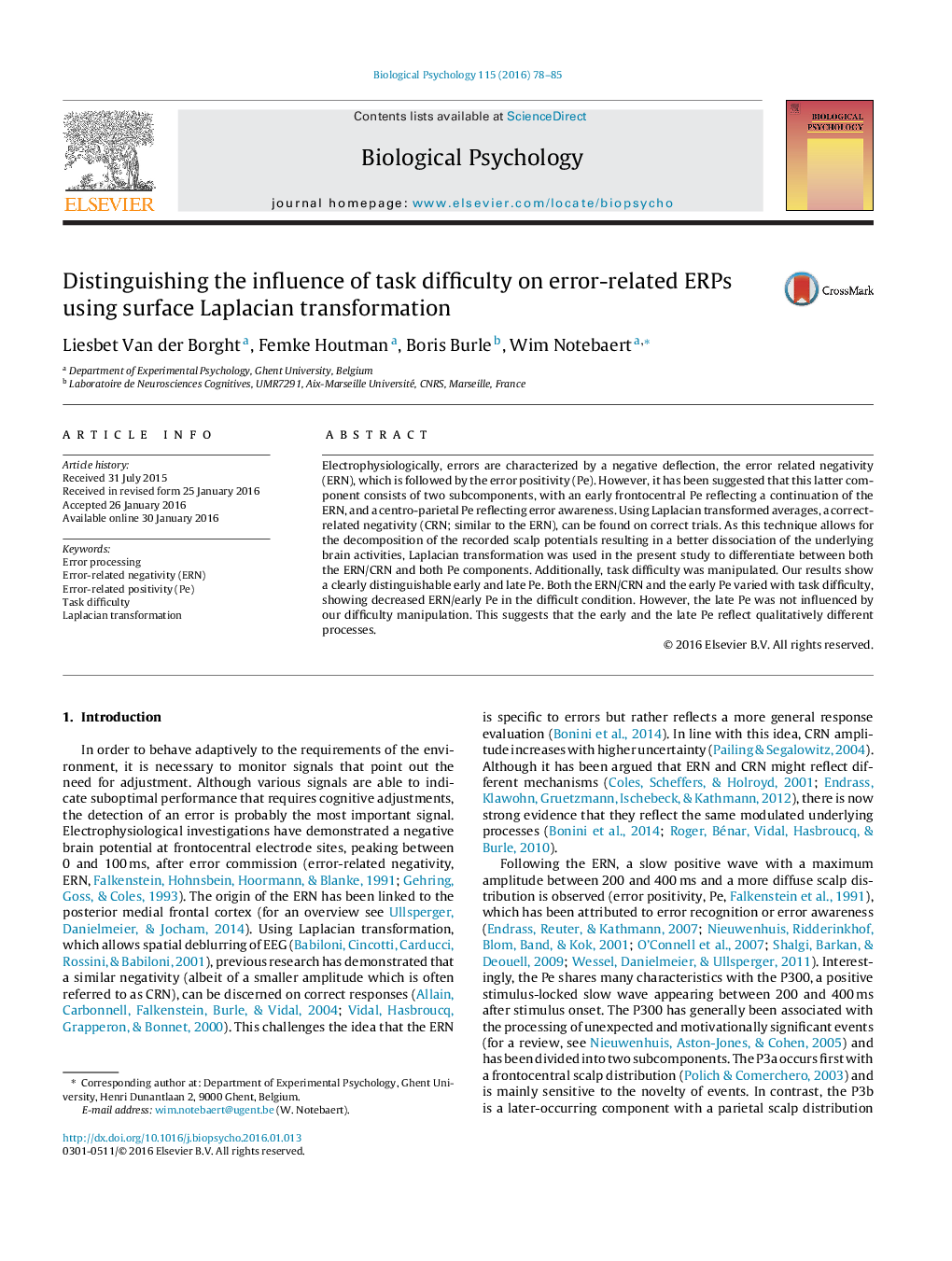| Article ID | Journal | Published Year | Pages | File Type |
|---|---|---|---|---|
| 920729 | Biological Psychology | 2016 | 8 Pages |
•16 participants completed an easy and difficult version of a flanker task.•Error-related ERP components were investigated using Laplacian transformation.•Laplacian transformation dissociates the early Pe from the late Pe.•The difference between ERN/CRN and the early Pe was smaller in the hard condition.•The late Pe was not influenced by task difficulty.
Electrophysiologically, errors are characterized by a negative deflection, the error related negativity (ERN), which is followed by the error positivity (Pe). However, it has been suggested that this latter component consists of two subcomponents, with an early frontocentral Pe reflecting a continuation of the ERN, and a centro-parietal Pe reflecting error awareness. Using Laplacian transformed averages, a correct-related negativity (CRN; similar to the ERN), can be found on correct trials. As this technique allows for the decomposition of the recorded scalp potentials resulting in a better dissociation of the underlying brain activities, Laplacian transformation was used in the present study to differentiate between both the ERN/CRN and both Pe components. Additionally, task difficulty was manipulated. Our results show a clearly distinguishable early and late Pe. Both the ERN/CRN and the early Pe varied with task difficulty, showing decreased ERN/early Pe in the difficult condition. However, the late Pe was not influenced by our difficulty manipulation. This suggests that the early and the late Pe reflect qualitatively different processes.
